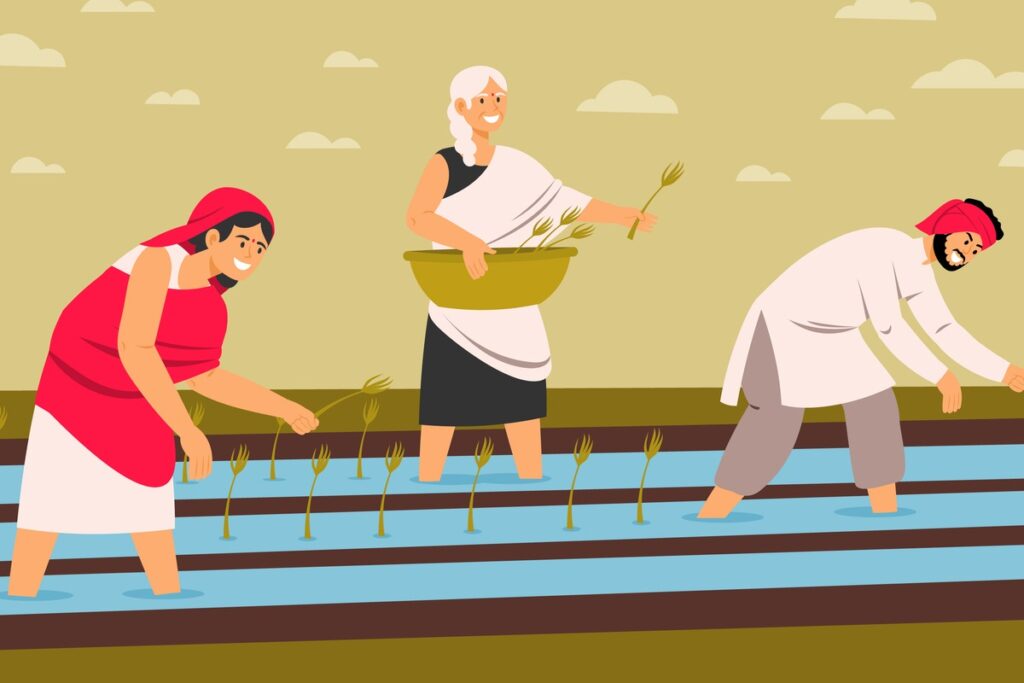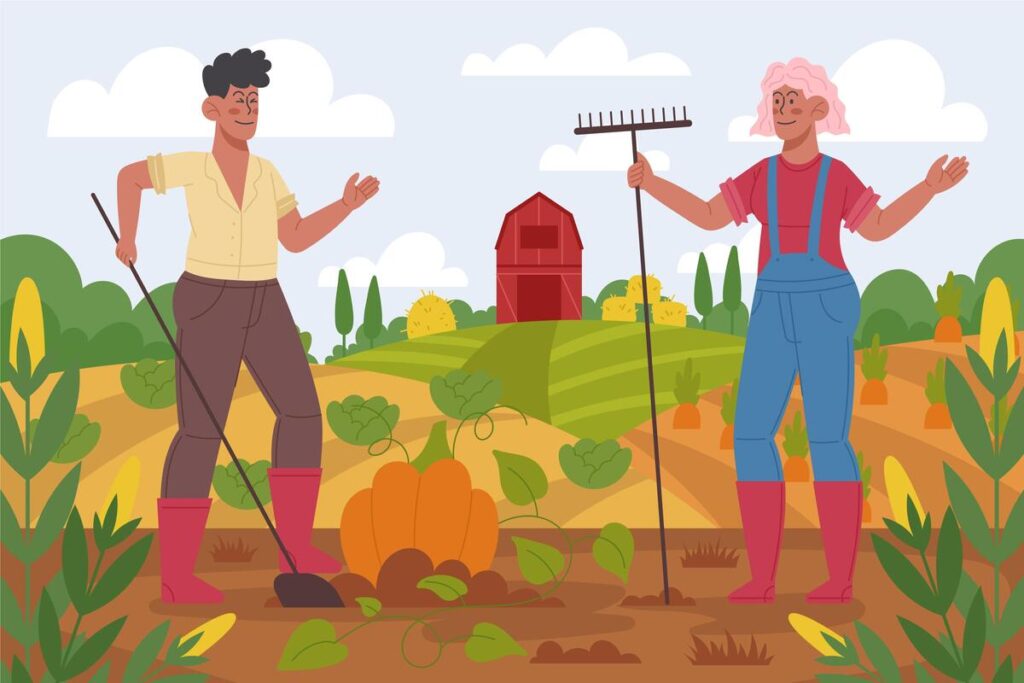Human power continues to play a vital role in agriculture, especially in areas where machinery is not readily available. Farmers and agricultural workers carry out crucial tasks such as planting, tending, and harvesting crops, often relying on traditional methods passed down through generations. This hands-on approach enables them to pay close attention to every detail and adapt to different circumstances. When it comes to tasks that demand skill and decision-making, such as pruning and choosing ripe produce, human power is irreplaceable.
Even with the progress in agricultural technology, the expertise and hard work of farmers remain crucial for the success of farming, particularly in small-scale and subsistence agriculture, where technology adoption is slower. Human knowledge and experience play a key role in enhancing agricultural practices to sustain food production and rural livelihoods.
Although there are numerous benefits to using human power in agriculture, there are also some drawbacks that can impact efficiency, productivity, and sustainability, especially with the increasing demands of modern agriculture and advancements in technology. In this article, we will discuss in detail the advantages and disadvantages of human power in agriculture.
Table of Contents
Advantages of Human Power in Agriculture

1. Attention to Detail
Human labor enables farmers and workers to pay close attention to every detail in agricultural practices. They can meticulously monitor the health of plants, spot pests and diseases at an early stage, and promptly take necessary actions. Achieving this level of careful observation and intervention is challenging for machines, especially when it comes to crops that demand gentle handling.
2. Adaptability and Flexibility
Humans have an incredible ability to adapt and modify their actions according to what they see and the circumstances around them. This adaptability is particularly important in agriculture, where the weather, soil conditions, and crop health can fluctuate greatly and change unexpectedly. Unlike automated systems, human workers can quickly make decisions to safeguard and enhance crop growth, which may not be as efficiently done by machines.
3. Cost-Effectiveness in Low-Tech Regions
Many developing regions face the challenge of expensive advanced agricultural machinery, which can be too costly to afford. As a result, small-scale and subsistence farmers often rely on human labor as a more affordable alternative. Moreover, the maintenance and operation of machinery demand technical expertise and resources that may not be easily accessible in these areas.
4. Cultural and Traditional Knowledge
Human workers play a crucial role in agricultural practices by bringing in their priceless cultural and traditional knowledge. This knowledge encompasses generations of wisdom regarding local crop varieties, planting methods, soil management, and weather patterns. It is specifically adapted to suit the unique local conditions and has the power to greatly improve productivity and sustainability.
5. Precision in Selective Tasks
Certain agricultural activities, like pruning, grafting, and selective harvesting, demand accuracy and a delicate approach that machines struggle to imitate. Humans shine in these tasks, guaranteeing plant safety and harvesting only the finest produce, ultimately enhancing the quality of the entire crop.
6. Employment and Rural Development
Agriculture is a major source of employment for many people around the world, particularly in rural areas. The hard work put into farming not only helps people make a living but also plays a crucial role in reducing poverty and boosting the socio-economic growth of rural communities. This becomes even more significant in places where there are limited options for other types of jobs.
7. Resilience to Technological Failures
Depending solely on technology can be dicey because of the possibility of failures and malfunctions. Human labor acts as a crucial backup, guaranteeing that agricultural operations can carry on even in the event of machinery breakdowns or technical glitches. This resilience is vital for maintaining consistent agricultural productivity.
8. Environmental Considerations
Traditional farming techniques that rely on human power are often more eco-friendly than using machines, which can harm the environment through the use of fossil fuels and soil degradation. By opting for manual farming, we can lower carbon emissions, preserve soil quality, and support biodiversity.
Disadvantages of Human Power in Agriculture

1. Labor Intensity and Physical Strain
Agricultural work requires a lot of physical effort, with tasks like planting, weeding, harvesting, and operating heavy machinery. It can be tiring and put a strain on the body, leading to fatigue, injuries, and potential long-term health problems for those working on farms.
2. Low Efficiency and Productivity
Mechanized farming is much more efficient and faster compared to human labor. When tasks like planting or harvesting are done manually, they take up a lot of time. This lack of efficiency can restrict the farm’s production scale and overall productivity.
3. Labor Shortages
A lot of areas are dealing with a lack of farm workers because people are moving to cities, the rural population is getting older, and younger generations aren’t interested in farming. This shortage can cause delays in planting and harvesting, which can have a negative impact on crop yields and the profitability of farms.
4. Weather Dependence
Weather conditions greatly impact human labor in agriculture. Whether it’s scorching heat, freezing cold, heavy rain, or any other extreme weather, it can stop farm work and result in crop damage, causing financial uncertainty for farmers.
5. Economic Challenges
Relying on human labor can be tough financially because of increasing wages and the expenses of hiring, training, and keeping workers. This is particularly hard for small farmers who don’t have a lot of money to spare.
6. Inconsistent Quality and Productivity
Human labor comes in different levels of skill, efficiency, and reliability, which can result in inconsistent quality and productivity. This lack of consistency can have an impact on the overall quality of the products and the ability to reliably meet market demands.
7. Technological Lag
In areas where human labor is crucial, there may be resistance or difficulty in embracing modern agricultural technologies. This delay in technology adoption can impact competitiveness, stifle innovation, and hinder the implementation of sustainable farming methods.
8. Health Risks and Poor Working Conditions
Farmworkers often face poor working conditions, exposure to dangerous chemicals, and limited healthcare options. These elements increase the chances of health issues related to their occupation and diminish the overall well-being of those working in agriculture.
Conclusion
In conclusion, utilizing human power in agriculture comes with a mix of advantages and disadvantages that have a significant impact on the industry. Human workers offer flexibility, attention to detail, and the ability to handle tasks that require skill and decision-making, which is especially beneficial for small-scale and subsistence farming. It helps support rural communities and preserves traditional farming knowledge. However, relying on human labor can lead to inefficiencies, physical strain, and susceptibility to labor shortages and bad weather. Economic challenges, inconsistent productivity, and health risks for workers also highlight the drawbacks of this labor-intensive approach. Finding a balance involves incorporating technology, improving working conditions, and providing education and training to enhance the efficiency and sustainability of agricultural practices.







